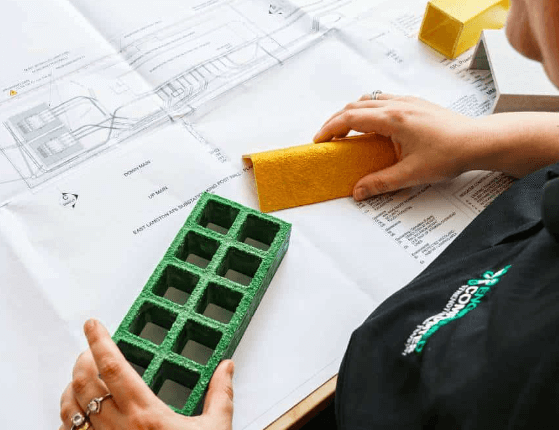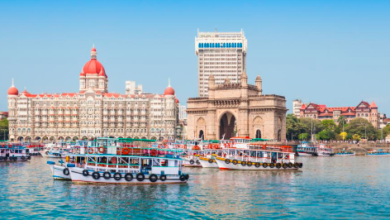What Is GRP (Glass Reinforced Plastic)?

Glass Reinforced Plastic (GRP), also known as fibreglass or Fibre Reinforced Plastic (FRP), is a composite material that combines strength, durability, and flexibility. By blending glass fibres with a plastic resin, GRP offers a unique balance of lightweight properties and robust performance. This innovative material has become a key component across industries, from construction to transportation, owing to its versatility and cost-effectiveness.
GRP’s significance lies not only in its practical uses but also in its adaptability. Its ability to resist corrosion, endure extreme conditions, and be moulded into complex shapes has made it an essential material in modern engineering. This article delves into the properties, applications, and future of GRP to highlight its pivotal role in today’s industrial landscape.
What Is GRP?
At its core, GRP is a composite material consisting of two main components:
- Glass Fibres: These provide the material with tensile strength and rigidity, acting as the “skeleton” of the composite.
- Plastic Resin: The resin binds the fibres together, creating a solid, unified structure that can be moulded and hardened.
This combination results in a material with a high strength-to-weight ratio, offering similar strength to metals like steel while being significantly lighter. Additionally, GRP is corrosion-resistant, making it an ideal alternative to materials prone to rust or degradation in harsh environments.
GRP’s affordability and adaptability also set it apart from other advanced composites, such as carbon fibre. While carbon fibre is stronger and lighter, it comes with a much higher cost, making GRP the preferred choice for projects where cost-effectiveness is a priority.
How Is GRP Made?
The production of GRP involves a series of carefully controlled steps to ensure its quality and performance:
- Glass Fibre Preparation: The glass fibres, which can take the form of mats, chopped strands, or woven fabrics, are chosen based on the desired properties of the final product.
- Application of Resin: The fibres are coated or infused with a plastic resin, such as polyester, epoxy, or vinyl ester, to bind them together. The choice of resin depends on the application and the required chemical or thermal resistance.
- Moulding and Curing: The resin-coated fibres are placed into moulds and cured through heat, pressure, or UV light. This process hardens the resin, creating a rigid and durable material.
Popular manufacturing techniques include:
- Hand Lay-Up: A manual method where resin is applied to fibres layer by layer. Ideal for custom or small-scale production.
- Spray-Up: A more automated process where resin and chopped fibres are sprayed onto a mould. This is efficient for producing large items like tanks or boat hulls.
- Pultrusion: A continuous process used to create long, uniform shapes like beams or pipes.
Each method offers advantages depending on the scale, complexity, and intended use of the GRP product.
Key Properties of GRP
GRP’s unique properties make it a standout material across various industries. Its most notable characteristics include:
- Lightweight: GRP is significantly lighter than metals, making it easier to transport and install.
- Strength and Durability: Despite its lightweight nature, GRP offers excellent tensile and compressive strength.
- Corrosion Resistance: GRP does not rust or degrade when exposed to water, chemicals, or extreme weather conditions.
- Thermal and Electrical Insulation: Its non-conductive nature makes it ideal for applications requiring electrical safety.
- Customisability: GRP can be moulded into complex shapes and finished in various colours and textures, offering both functional and aesthetic flexibility.
These properties ensure GRP can meet demanding performance requirements while offering long-term reliability and minimal maintenance.
Applications of GRP
GRP’s versatility allows it to serve a wide range of industries and applications:
Construction
- Roofing sheets, cladding, and insulation panels.
- GRP drainage systems and manhole covers due to their corrosion resistance.
- Structural components like beams and supports.
Transportation
- Boat hulls and decks for marine applications, thanks to GRP’s lightweight and water resistance.
- Vehicle body panels and storage containers in automotive and aerospace industries.
Utilities
- Water storage tanks and sewage systems designed to resist corrosion and chemical exposure.
- Cable management systems and electrical enclosures for non-conductive and weatherproof solutions.
Consumer Goods
- Sports equipment, garden furniture, bathtubs, and shower enclosures due to GRP’s lightweight, durable, and visually appealing qualities.
Renewable Energy
- Wind turbine blades and solar panel mounting systems that require high strength and minimal weight.
Each of these applications highlights GRP’s ability to deliver reliable performance in diverse and demanding environments.
Benefits of Using GRP
GRP offers numerous advantages over traditional materials like wood, steel, and aluminium:
- Strength Without Weight: GRP’s strength-to-weight ratio reduces transportation costs and simplifies installation processes.
- Long-Term Durability: GRP can withstand decades of use in harsh environments with minimal wear or damage.
- Corrosion Resistance: Ideal for applications exposed to water, chemicals, or extreme weather.
- Cost-Effectiveness: GRP provides a durable and customisable solution at a lower cost compared to many alternatives.
- Sustainability in Design: Its long lifespan reduces the need for frequent replacements, contributing to resource conservation.
These benefits make GRP a preferred choice for projects requiring a balance of performance, affordability, and longevity.
Limitations of GRP
While GRP has many strengths, it is not without its limitations:
- Environmental Concerns: GRP is not biodegradable, and recycling options are limited. This raises concerns about its long-term environmental impact.
- Repair Challenges: Damaged GRP requires specialised repair techniques, which can be costly and time-consuming.
- UV Sensitivity: Prolonged exposure to sunlight can cause degradation or discolouration without protective coatings.
Understanding these limitations helps users make informed decisions about its suitability for specific applications and explore ways to mitigate potential drawbacks.
Future of GRP
The future of GRP lies in innovation, with a focus on sustainability and enhanced performance. Researchers are developing bio-based resins and recycling technologies to address environmental concerns. These advancements aim to make GRP a more eco-friendly material without compromising its durability and versatility.
The renewable energy sector is also driving demand for GRP. Wind turbine blades and other components rely on GRP for its lightweight and robust properties. Similarly, its use in green technologies like solar panel supports highlights its potential to contribute to sustainable solutions.
As industries continue to evolve, GRP’s adaptability ensures it will remain a cornerstone material in construction, transportation, utilities, and beyond.
Read also: Cleaning Up After Construction: What You Need to Know
Conclusion
GRP is a versatile, cost-effective material that has revolutionised modern engineering and manufacturing. Its unique combination of strength, durability, and lightweight properties makes it indispensable across a range of industries. While it has limitations, ongoing advancements in material science are addressing these challenges, ensuring GRP remains a vital and sustainable option for future innovations. Whether in construction, transportation, or renewable energy, GRP’s impact is undeniable, and its role in shaping our world continues to grow.




